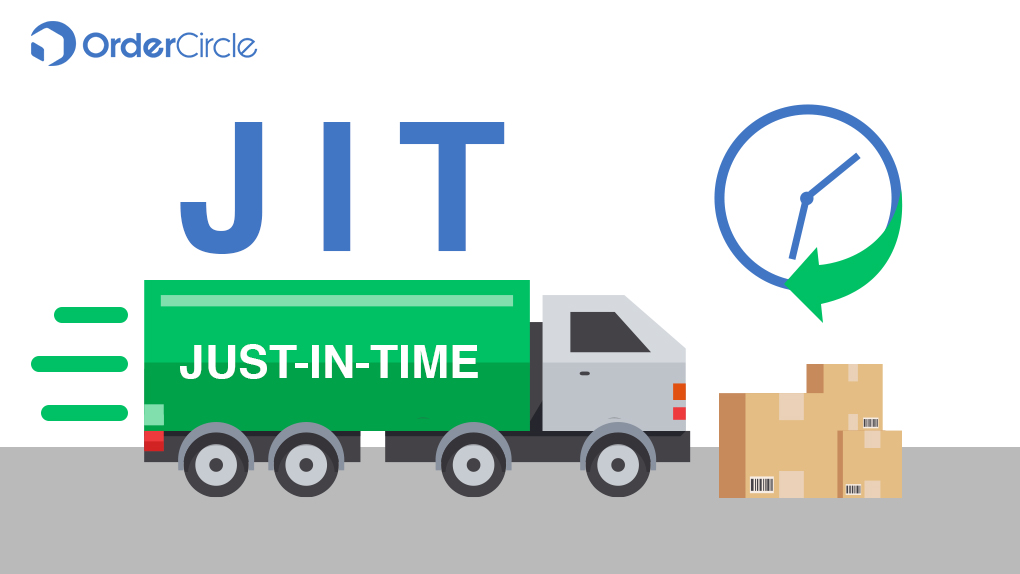Just-In-Time Inventory
Hasan Nasir

What is ‘Just-In-Time’ concept?
Just-in-Time or JIT means ‘ordering and receiving things only at a time when they are needed and only in the quantity in which they are needed’.
Under the JIT inventory management, a company orders and receives materials only when needed in the manufacturing process and only in the quantity required to fulfill the available orders. Hence, the company does not stock inventory beforehand in anticipation of demand. Rather, it orders and produces as per the actual demand.
Emergence of JIT concept: The Toyota Story
JIT was first implemented by Toyota in Japan. After world war II, industries in Japan lacked the space and resources to carry out mass manufacturing and storage. Hence, this concept evolved to ensure need-based purchase and production. It resulted in a reduction of costs and resource requirements.
After successful implementation by Toyota, this concept has been adopted by many companies in various industries. Giants like Apple, Kellogg’s, Zara, McDonald’s, Harley Davidson, Dell, and Tesla have implemented this concept.
Objective of JIT:
JIT aims at reducing the working capital investment in the form of inventory costs. This objective is achieved by improving the efficiency of the production process and reducing wastage & over-stocking. Material is purchased only in the required quantity and at the required time. This further results in lowering the warehousing, insurance, and administration costs.
JIT, however, requires a high level of coordination between all departments of a company. It is essential to ensure no stockpiling of goods due to over-production or no delay in delivery due to lower production.
JIT inventory management process:
Under the JIT inventory management concept, the primary step is receipt of the order from customers. The production process is started only after receipt of the order. The company does not hold inventory, except for very few critical materials. Inventory purchase, only in quantities to fulfill that order, is subsequently undertaken. Material arrives as close as possible to the production process so that the storage space in the warehouse is used for a minimal amount of time, thus reducing the storage, insurance, and administration costs. Also, once the final product is ready, it is shipped to the customer at the earliest, which again reduces storage and handling costs.
Benefits of JIT:
Worldwide acceptance of JIT by some of the leading companies is mainly due to the following benefits:
Savings in costs and requirement of smaller investment: JIT reduces cost and capital investment required in a business, due to minimal production and storage levels. This ultimately results in an improvement in profitability and higher returns on investments (ROI).
Reduction in risk of product obsolescence/wastage: Only an order-backed production is undertaken in JIT. This reduces the losses a company could face in case of a sudden drop in the product demand.
Quicker deliveries: JIT enables quicker deliveries of the final product, as, after production, the final product is not stored in the warehouse for a longer period.
Limitations of JIT and factors essential for its successful implementation:
Any system, howsoever efficient, has some limitations. Thus, before discussing the factors which are critical for the successful implementation of JIT, let us briefly look at some of its limitations:
Shortage of raw materials – Under JIT, the company carries minimal stock, which may result in a shortage of material in case of a sudden increase in demand.
Dependence on Suppliers – Dependence on timely receipt of materials from suppliers increases in JIT, since any delay could result in a delay in production and sales due to lack of inventory.
Sudden increase in raw materials prices – JIT offers limited flexibility to the company to wait for a reduction in material prices. Also, the company does not have the benefit of stocking low-cost inventory beforehand.
Issues in re-working of orders: Rework on orders is relatively difficult under JIT as only minimal inventory, based on the original preference of the customers, is kept in the system.
Now that we have a brief idea about the advantages and limitations of this system, let us see the factors which are critical for its implementation:
- Accurate sales forecasting to adequately meet customer demand.
- Association with reliable suppliers and adequate backup of the suppliers. This is critical in case of disruption in supply from existing suppliers.
- Coordination between various suppliers, so that final product could be manufactured timely.
- Flexibility in the production process to enable quick changeover between products, in case of any change in consumer preference.
- Coordination between various departments such as finance, purchase, production, and logistics so that orders are placed timely to meet the production and sales targets. Softwares could help achieve the same.
Adequate training of people to enforce ideas of improvement in processes and reduction of
- Non-productive activities
- Synchronization of the flow of production to avoid any production bottlenecks.
- Minimization of equipment downtime to avoid any delay in production and sales, as companies do not have back-up goods under JIT
Just-In-Time or Just-In-Case, what is good for your business?
JIT inventory management aims at achieving ‘maximum (value) with minimum (inputs)’. It is a promising concept for cost reduction and efficiency improvement. However, whether to adopt this concept or to follow the traditional ‘Just-In-Case’ strategy (wherein goods are stocked in anticipation of demand) depends upon various factors. These include the ability of the organization to adapt to the changes, make accurate demand predictions, establish a reliable supplier base with adequate backups and invest in technological advancements, amongst others. Businesses which may benefit from bulk purchases or which do not have flexible processes or a reliable supplier base are less likely to benefit from JIT.
